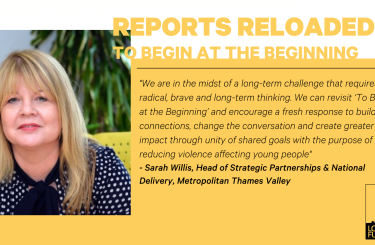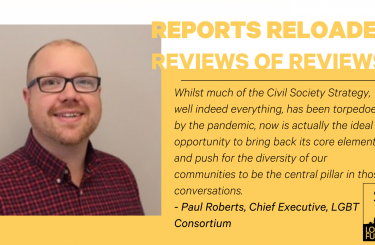In January 2011 my brother-in-law was stabbed 13 times by a group of boys and girls of similar age whilst walking alone to his friend’s house. He was 18 years old at the time and not associated with any gangs, he was simply in the wrong place at the wrong time.
My wife, his sister and I remember the feeling of dread when we received the phone call to let us know what had just happened. We remember arriving at the scene and seeing him laying in a pool of blood while the emergency services tried desperately to save his life. They did. He was one of the lucky ones. The days that followed were extremely difficult because no one knew how to console him, or how to ease the intense pain he felt both from his injuries and the trauma he was experiencing. No one was charged with his attack, even though most people in the area in which he lived knew who the attackers were.
A few months after the attack my wife called me frantically to tell me that she had seen one of the main perpetrators walking into a local charity for homeless children, near her place of work. That night we talked about how this made us both feel. Despite knowing through our work, the underlying risk factors that increase the likelihood of someone committing a serious crime, we still struggled with this question; how could this young man and his friends inflict such pain on another young person? It was much easier to feel an immense amount of anger towards the young man because of the trauma he had inflicted upon our lives than it was to consider the trauma that he may have experienced in his life.
Our story illustrates the complexity of serious youth violence and the importance of taking a public health approach to tackle it. Looking at violence as an isolated incident or solely a police enforcement problem has been proven to be insufficient
The London Funders report ‘To begin at the beginning’ published in 2019 was a breath of fresh air. For many years experts within the Sector had been making the case for consistent investment in organisations delivering primary prevention work (preventing violence before it happens). Whilst investment in secondary (immediate response to violence) and tertiary (long-term care and rehabilitation) interventions is needed, sometimes it felt like we were treating the symptoms rather than the cause.
The nine principles highlighted in the report encouraged funders to pause and ask themselves some pertinent questions, including:
- Are their existing investment programmes encouraging and promoting strategic, coordinated, long-term and evidence-based approaches?
- Are they supporting violence reduction programmes that ensures that young people and communities are active participants rather than merely passive observers of the work?
Looking back at the report the following remain as key challenges:
Having the courage to invest in something new
In the final few paragraphs of the report, Jamel Fraser, a Youth/Mental Health Policy Consultant urged funders to resist the lure of evidence-based investment, as this can often leave the door open to do what has already been done. Instead, Jamel challenged funders to invest in untested approaches that have been deeply informed by practitioners, young people, and communities with lived experience of serious youth violence. These untested but well-informed approaches often have the capability to adapt to emerging trends in serious youth violence.
Long-term challenges require long-term solutions
Some of the most innovative proposals I’ve seen focus on forming trusted relationships which requires long-term and large-scale investment. The architects of these interventions are passionate and experienced youth practitioners that are determined not to compromise the principles of the programme by accepting short-term funding. There is a general acknowledgment that it will take some time to see the significant impact of adopting a public health approach, and yet it is still incredibly difficult for some of the voluntary community sector to acquire long-term funding.
There is a general acknowledgment that it will take some time to see the significant impact of adopting a public health approach, and yet it is still incredibly difficult for some of the voluntary community sector to acquire long-term funding
Build on the strengths of local people
In a recent post by NAVCA (National Association for Voluntary and Community Action), CEO Maddy Desforges shared her reflection of the Covid-19 pandemic and how the voluntary community sector responded. The post described how protocol barriers between local VCS and public sector services had regularly broken down to ensure urgent care and support was delivered by the person or organisation best placed. It gave examples of how working together at pace to prioritise and address immediate challenges became more important than evidencing the need. The post also referred to genuine partnership working and the devolution of power in recognition of each other’s strengths.
Imagine what we could achieve if we transposed some of these changes in approach to tackling serious youth violence.
Last year, 30 teenagers were brutally murdered in the capital, passing the previous peak of 29 seen in 2008...it emphasises two unavoidable facts; we still have a long way to go, and we can’t afford to be complacent
The advocation for a systemic approach to funding serious youth violence reduction work with the voices of young people and communities at the centre is as relevant and important now as it was in 2019. Last year, 30 teenagers were brutally murdered in the capital, passing the previous peak of 29 seen in 2008. This is devastating news for everyone working so hard to ensure the health and safety of every young person. It emphasises two unavoidable facts; we still have a long way to go, and we can’t afford to be complacent.


